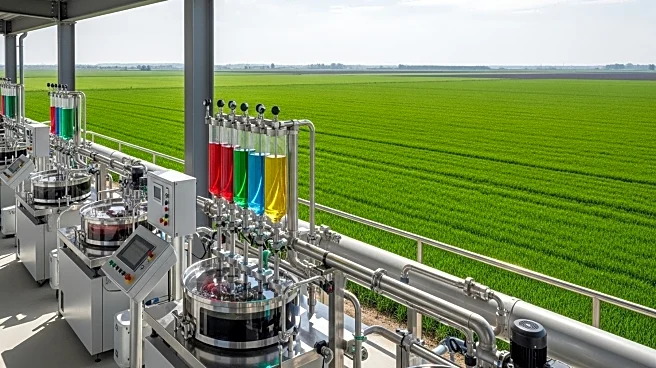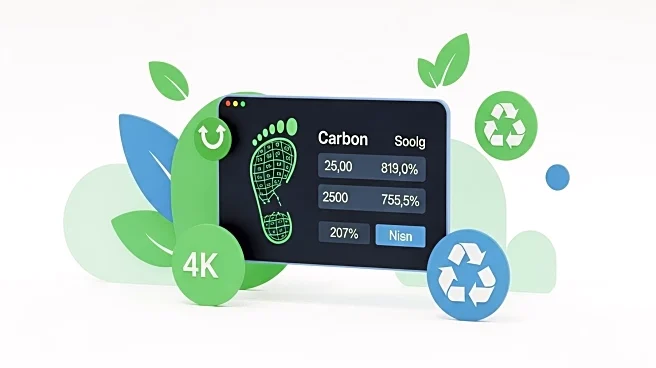What's Happening?
A Yale-led study published in the journal Nature Water has identified crushed limestone as a potential solution to reduce carbon emissions from agriculture. Agriculture, including livestock and farmland activities, contributes approximately 10% of global annual carbon emissions. The study suggests that spreading crushed limestone on farmland can store carbon by reacting with carbon dioxide to form bicarbonate ions, which eventually become calcium carbonate, a carbon-storing solid. This process could significantly reduce pollution without altering the emissions produced, offering a sustainable and cost-effective method to address carbon issues in agriculture.
Why It's Important?
The findings of the Yale study are significant as they offer a practical approach to mitigating carbon emissions from agriculture, a major contributor to global warming. By using limestone, farmers can potentially reduce the environmental impact of their operations without incurring high costs. This method aligns with broader efforts to achieve carbon reduction goals, emphasizing the necessity of removing carbon from the atmosphere alongside halting emissions. The study highlights the importance of innovative solutions in the fight against climate change, providing a pathway for sustainable agricultural practices that benefit both the environment and the farming industry.
What's Next?
The study encourages the modification of liming practices to drive carbon removals, suggesting that this should be prioritized by farmers and policymakers. As awareness of the benefits of limestone grows, it is likely that more agricultural stakeholders will adopt this practice. Future research may focus on optimizing limestone application techniques and exploring additional methods to enhance carbon storage in agriculture. Policymakers may also consider incentives or regulations to promote the use of limestone in farming, contributing to broader climate change mitigation strategies.
Beyond the Headlines
The use of limestone in agriculture not only addresses carbon emissions but also improves soil health, offering a dual benefit to farmers. This approach reflects a growing trend towards integrating environmental sustainability into agricultural practices. As industries become greener and lifestyle choices evolve, the adoption of such methods could lead to long-term shifts in how agriculture interacts with the environment, potentially influencing policy and cultural attitudes towards sustainable farming.











